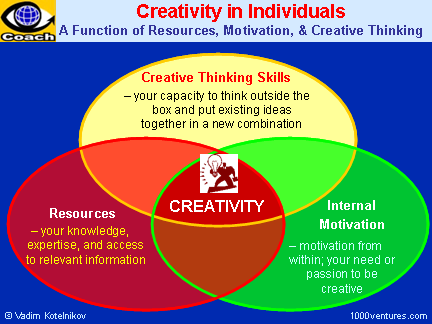we want to reinforce self-discovery. Coaching is a process to help
people maintain and develop an internal locus of empowerment.
Advice, even great advice, inherently leads the client to look for and
external locus of influence. Remember coaching is an art form not a
science and it works best when creativity is the process present in
every coaching conversation. My advice, (I mean my request) is for all
coaches to be an artist, not an advisor.
© Copyright, Dr. Patrick Williams.
So, what you do if a coachee turns to you for advisc?
One of the most common mistakes in coaching is giving advice rather
than helping the coachee find their own answers. This is an easy
mistake to make because most of us are so keen to help (and show that
we are helpful) and because many coachees are used to being given
advice and they expect it.
From my personal experience of coaching, observing others coaching
and being coached, I am convinced that most advice-giving in coaching
is nowhere near as powerful and effective as eliciting the answers from
the coachee. Eliciting the answers takes more skill and it also takes
439
deep trust in the process of coaching, to believe that it is worth taking a
bit more time and to make the space for the coachee to be creative.
Recently I learned a very simple and helpful process that simplifies my
job in supporting my coachees to come up with their own answers so
that I don’t have to give them advice. Here’s how it works:
Let’s say my coachee asks me something like this: “How can I … ? or
“What can I do to …? My coachee is seeking an answer to some question
or problem he is facing. My options in that moment are to:
1) Give an answer,
2) Ask another question that helps him think further about what the
answer might be, or
3) Suggest that we brainstorm possible solutions together.
Obviously Option 1 is giving advice and not recommended.
In the past I have often used Option 2 and asked my coachee something
like “What do you think you could do?” There’s nothing really wrong
with this question, but asking a question like this does have some risks.
If my thinking is not clear enough, I might frame the question too
tightly and restrict the coachee’s responses. For example I might say
“What do you think you could do to discover the root causes of this
problem?” when in his mind there are no answers in the root causes
and this is simply a distraction from the real question. Also, there is an
implication that there is one ‘right’ answer, and this limits creativity.
Another risk with following Option 2 is that it may seem like I am
throwing the difficult question back to him and withholding my own
experience, wisdom and support.
Option 3 has some clear advantages. I could start by saying, “How about
if we brainstorm some possible solutions together?” Immediately I am
asking permission from the coachee to follow this next step. It is a way
of checking the importance of the question and keeping the coachee in
control of the process. I am open to the coachee saying, “Actually, I
440
know what I need to do.” !! But often the coachee will agree and I will
say, “How about if you come up with two possible solutions, then I’ll
add two, and we’ll carry on until we have a whole bunch?” Depending
on the confidence of the coachee in this problem, I could also ask him to
come up with a whole bunch of possibilities and then I’ll add some
more afterwards.
A coachee is often not aware that there are any possible solutions to his
problem, so he will find it encouraging to think that together we will
find many. It is up to the coach to provide this confidence: essentially
the trust that coaching will work and that there are always possibilities
and choices in any situation.
Here are some of the other advantages of this approach:
By focusing on creating possible solutions rather than solving the
problem, you temporarily stop the judgment and critical thinking that
often blocks creativity. Your goal is to collect all the solutions first, and
then evaluate them later. Doing this unleashes creativity and in itself
will help the coachee think of things they haven’t thought of before.
Coachees often mistakenly believe that the solutions coming from the
coach are more valuable than those they generate themselves. You can
counteract this assumption by collecting the ideas together so that they
have more equal weight. It’s also possible to generate contradictory
ideas to make it clear that the coachee has to choose based on his own
evaluation of what will work best for him.
Sometimes this process works so well that the coachee immediately
comes up with an excellent solution that he knows is perfect for him
and that he is excited to implement. Other times we generate a long list
and feel safe with an abundance of choices for actions to take. This is
what coaching is all about: creating new ways of thinking that change
people’s lives.
Most people are not very experienced at being coached. This fact makes
it even more important that coaches trust the coaching process and let
the power of coaching reveal itself to coachees. The ‘aha’ moments that
441

they experience as a result will let them realize the true power of
coaching.
Source: http://spaxman.com.hk/about-coaching/how-to-coach-when-
you-really-want-to-give-advice/
But nothing is ever completely black or white in life.
Here is what Thomas Leonard has to say about this issue :
"Many of the newer clients hiring coaches are hiring that coach not only
for their coaching skills set but also for the coach's situational
knowledge and solutions set. Traditional/purist coaching will be
around for a long time, but the market is asking for coaches with
solutions, not just coaches who are good at evoking or supporting. Both
are important. The definition of coaching is expanding because the
marketplace is demanding it."
So here are some Tips for Giving Advice in a Coaching Relationship
Posted on October 13, 2009 at 11:10 am by Stephan Wiedner
442

Have you ever tried giving advice to a teenager? If you haven’t, you can
imagine that everything you say is going to go in one ear and out the
other. Of course rebellious teenagers are an extreme case but most
people don’t respond to unsolicited advice. It’s a waste of good
intentions.
In order to save you some effort, here are 3 tips for giving advice when
you are coaching someone.
Just to be clear, at a fundamental level, coaching is not about giving
advice. It is about asking questions and engaging the coachee in
discovering their own solutions. But coaching doesn’t always work that
way. Every now and again, you will have a nugget of information that
can really help a client and here are some helpful tips to get your
message across.
Tip 1: Switch between a coaching “hat” and an advisor “hat”
As
previously
mentioned,
coaching is primarily focused on
asking questions and wearing
your coaching “hat”. When the
conversations leads to a great
opportunity for you to share
advice, it helps to be clear that you
are going to switch to an advice-
giving “hat”. Make sure you know
the difference.
When you switch to an advice-giving hat, the coachee may no longer be
using their active thinking and will zone out. Look for signs that the
coachee is not really listening or paying attention. If they are not
engaged in what you are saying, it will be a waste.
Tip 2: Be transparent when you are switching “hats”
If you are going to be switching “hats” and giving advice, it never hurts
to be completely transparent with the coachee. Say things like “I am
going to take off my coaching hat for a minute. I want to share a
443
personal experience with you.” Being transparent like this gives the
coachee the ability to ready themselves for your story or advice.
For fun, you can actually switch hats, for real. You may have a sun hat
that is perfect for coaching and a scholarly hat for giving advice.
Whatever hats work for you. Have fun with it.
Tip 3: Give advice from your own experience
Nobody likes a know-it-all. If you are going to give advice, try to limit
your advice to your personal experiences, good or bad. Avoid quoting a
$100 text book you barely read in University 15 years ago.
For example, consider saying things like “I haven’t done what you are
trying to do but I did try something similar and here’s what I
discovered” or “When I tried that, here’s what I learned”.
Bonus Tip: Notice when you are working too hard
If you are working really hard for the coachee to get your brilliant
advice and they just don’t get it, take off your advice-giving hat. Don’t
bother. Switch to your coaching hat and engage their active thinking
brain. Ask some simple questions like:
What do you want?
What do you think are the next steps? or
What are you learning?
Let the coachee do all the hard work. Surprisingly, they’ll get more
value from it.
444



3.15 CREATIVE THINKING
By: Vadim otelnikov
Inventor and Founder
See the Big Picture
Ten3 Business e-Coach
1000ventures,
3 Pillars of Inspiration
1000advices.com
InsBeCo, Success360
Innovarsity.com,
Entrepreneurial Creativity
Fun4Biz.com
"Creativity is allowing yourself to make mistakes. Art is knowing which
ones to keep." – Scott Adams
445

Creative Thinking Tips
Break out of self-imposed limitations.
Look for wider solutions, 'think outside the box’.
Think sideways; explore the least likely directions; abandon
step-by-step approach and thinking 'to one side' and master the
'lateral thinking' approach.
Sharpen your brain – communicate and exchange ideas with
other creative people as often as you can. This is useful not only
for stimulating idea generation but also for giving you an
opportunity to validate your ideas through professional
colleagues.
If you are thinking along a certain line and nothing happens,
stop. Step out of your Shoes, analyze the problem again and see if
you can come up with a new approach.
454
If you are working on a problem and getting nowhere, leave it for
a while and let your subconscious – your depth mind – to take
over. Soon, new ideas and facts will inspire new associations and
innovative combinations.
Creativity Defined
A "new" idea is often a combination of old elements. Being able to
devise new combinations depend on your ability to discern
relationships between seemingly disparate items.
"Creativity is the juxtaposition of ideas which were previously
thought to be unrelated.' It is your ability to combine ideas in a
unique way or to make useful associations among ideas.
"There is virtually no problem you cannot solve, no goal you cannot
achieve, no obstacle you cannot overcome if you know how to
apply the creative powers of your mind , like a laser beam, to cut
through every difficulty in your life and your work," says Brian
Tracy.
An Important Pre-Condition
Although creative people come from varied backgrounds, they all
seem to have one thing in common – they love what they are doing.
Practice Every Day
How often should you practice if you wish to win the World Tennis
Cup: once a month? once a week? every day?
How often should you exercise your right brain's creative muscles
if you wish to master your creative skills: once a month? once a
week? every day?
Take a Different View
Be different and make a difference!
455
It was by taking a different view of a traditional business that major
innovations were achieved. To find a better creative solution to the
current practice, force yourself to reframe the problem, to break
down its components and assemble them in a different way.
Ask Searching Questions
Creativity requires an inquisitive mind. Unless you ask lots of
"Why?" and "What If"? questions, you won't generate creative
insights. "To avoid this most common of creative errors, be sure to
peek under all carpets, including your own.
Don't take anything for granted. Especially success. Try looking at
the world through more inquisitive eyes; try getting ideas in
motion; try asking the all-important: "Why?" See what happens!"7
Why Should You Ask Searching Questions?
Searching questions can help you discover new opportunities,
uncover the roots of a problem, and find creative solutions to it.
Open your mind to what is possible.
Asking searching questions starts with challenging assumptions. If
you do not check assumptions you cannot be good at asking
searching questions. Don't ask one or two questions and then rush
straight towards a solution. With an incomplete understanding of
the problem it is very easy to jump to wrong conclusions.
Ask open-ended questions that elicit a wide rage of answers:
'Why' questions to discover the roots of the problem
'How' questions to discover different routes to significant
improvement.
Boosting Your Creativity
Creativity requires an inquisitive mind. Unless you ask lots of
"Why?" and "What If"? questions, you won't generate creative
insights.
456
"To avoid this most common of creative errors, be sure to peek
under all carpets, including your own. Don't take anything for
granted. Especially success. Try looking at the world through more
inquisitive eyes; try getting ideas in motion; try asking the all-
important: "Why?" See what happens!" says Alexander Hiam, the
author of Creativity,
Triggering Great Ideas
A major stimulant to creative thinking for business problem solving
is focused questions. A well worded question often penetrates to
the heart of the matter and triggers new ideas and insights. To
trigger more and better ideas, you, first, must be be very clear
about exactly what it is that you are trying to do.
Write it down and describe it as if it were already achieved. And,
second, question your assumptions continually. What if there were
a better way? Be willing to try something completely different.
Case in point : GOOGLE
"We run the company by questions, not by answers," says Eric
Schmidt, the CEO of Google. "So in the strategy process we've so far
formulated 30 questions that we have to answer. I'll give you an
example: we have a lot of cash. What should we do with the cash?
Another example of a question that we are debating right now is:
we have this amazing product called AdSense for content, where
we're monetizing the Web. If you're a publisher we run our ads
against your content. It's phenomenal. How do we make that
product produce better content, not just lots of content? An
interesting question. How we do make sure that in the area of
video, that high-quality video is also monetized? What are the next
big breakthroughs in search? And the competitive questions: What
do we do about the various products Microsoft is allegedly
offering?
"You ask it as a question, rather than a pithy answer, and that
stimulates conversation. Out of the conversation comes innovation.
457
Innovation is not something that I just wake up one day and say 'I
want to innovate.' I think you get a better innovative culture if you
ask it as a question."...
Getting the most out of knowledge workers will be the key to
business success for the next quarter century. Here's how we do it
at Google.
At Google, we think business guru Peter Drucker well understood
how to manage the new breed of "knowledge workers." After all,
Drucker invented the term in 1959. He says knowledge workers
believe they are paid to be effective, not to work 9 to 5, and that
smart businesses will "strip away everything that gets in their
knowledge workers' way." Those that succeed will attract the best
performers, securing "the single biggest factor for competitive
advantage in the next 25 years."
At Google, we seek that advantage. The ongoing debate about
whether big corporations are mismanaging knowledge workers is
one we take very seriously, because those who don't get it right will
be gone. We've drawn on good ideas we've seen elsewhere and
come up with a few of our own. What follows are ten key principles
we use to make knowledge workers most effective. As in most
technology companies, many of our employees are engineers, so we
will focus on that particular group, but many of the policies apply
to all sorts of knowledge workers.
1. Hire by committee. Virtually every person who interviews at
Google talks to at least half-a-dozen interviewers, drawn from
both management and potential colleagues. Everyone's opinion
counts, making the hiring process more fair and pushing
standards higher. Yes, it takes longer, but we think it's worth it. If
you hire great people and involve them intensively in the hiring
process, you'll get more great people. We started building this
positive feedback loop when the company was founded, and it
has had a huge payoff.
458
2. Cater to their every need. As Drucker says, the goal is to "strip
away everything that gets in their way." We provide a standard
package of fringe benefits, but on top of that are first-class dining
facilities, gyms, laundry rooms, massage rooms, haircuts,
carwashes, dry cleaning, commuting buses – just about anything
a hardworking engineer might want. Let's face it: programmers
want to program, they don't want to do their laundry. So we
make it easy for them to do both.
3. Pack them in. Almost every project: at Google is a team project,
and teams have to communicate. The best way to make
communication easy is to put team members within a few feet of
each other. The result is that virtually everyone at Google shares
an office. This way, when a programmer needs to confer with a
colleague, there is immediate access: no telephone tag, no e-mail
delay, no waiting for a reply. Of course, there are many
conference rooms that people can use for detailed discussion so
that they don't disturb their office mates. Even the CEO shared an
office at Google for several months after he arrived. Sitting next
to a knowledgeable employee was an incredibly effective
educational experience.
4. Make coordination easy. Because all members of a team are
within a few feet of one another, it is relatively easy to
coordinate projects. In addition to physical proximity, each
Googler e-mails a snippet once a week to his work group
describing what he has done in the last week. This gives
everyone an easy way to track what everyone else is up to,
making it much easier to monitor progress and synchronize
work flow.
5. Eat your own dog food. Google workers use the company's tools
intensively. The most obvious tool is the Web, with an internal
Web page for virtually every project and every task. They are all
indexed and available to project participants on an as-needed
basis. We also make extensive use of other information-
459
management tools, some of which are eventually rolled out as
products. For example, one of the reasons for Gmail's success is
that it was beta tested within the company for many months. The
use of e-mail is critical within the organization, so Gmail had to
be tuned to satisfy the needs of some of our most demanding
customers – our knowledge workers.
6. Encourage creativity. Google engineers can spend up to 20
percent of their time on a project of their choice. There is, of
course, an approval process and some oversight, but basically we
want to allow creative people to be creative. One of our not-so-
secret weapons is our ideas mailing list: a companywide
suggestion box where people can post ideas ranging from
parking procedures to the next killer app. The software allows
for everyone to comment on and rate ideas, permitting the best
ideas to percolate to the top.
7. Strive to reach consensus. Modern corporate mythology has the
unique decision maker as hero. We adhere to the view that the
"many are smarter than the few," and solicit a broad base of
views before reaching any decision. At Google, the role of the
manager is that of an aggregator of viewpoints, not the dictator
of decisions. Building a consensus sometimes takes longer, but
always produces a more committed team and better decisions.
8. Don't be evil. Much has been written about Google's slogan, but
we really try to live by it, particularly in the ranks of
management. As in every organization, people are passionate
about their views. But nobody throws chairs at Google, unlike
management practices used at some other well-known
technology companies. We foster to create an atmosphere of
tolerance and respect, not a company full of yes men.
9. Data drive decisions. At Google, almost every decision is based
on quantitative analysis. We've built systems to manage
information, not only on the Internet at large, but also internally.
We have dozens of analysts who plow through the data, analyze
460
performance metrics and plot trends to keep us as up to date as
possible. We have a raft of online "dashboards" for every
business we work in that provide up-to-the-minute snapshots of
where we are.
10. Communicate effectively. Every Friday we have an









